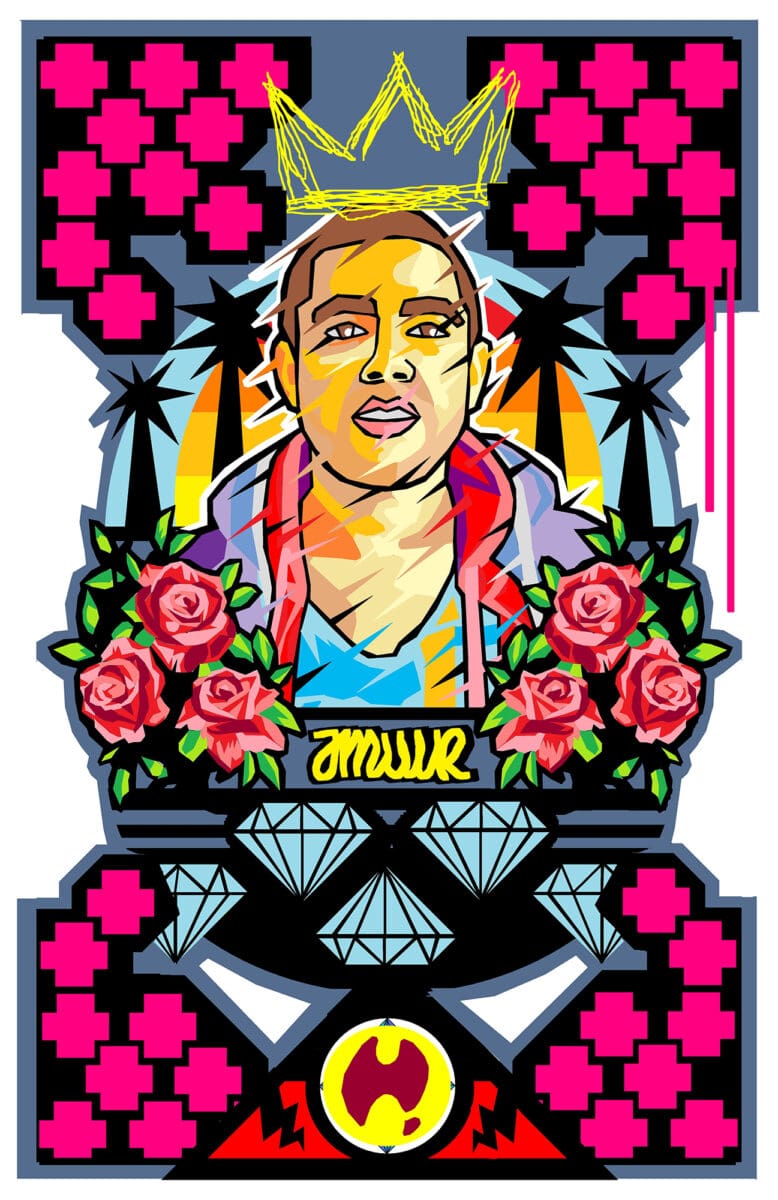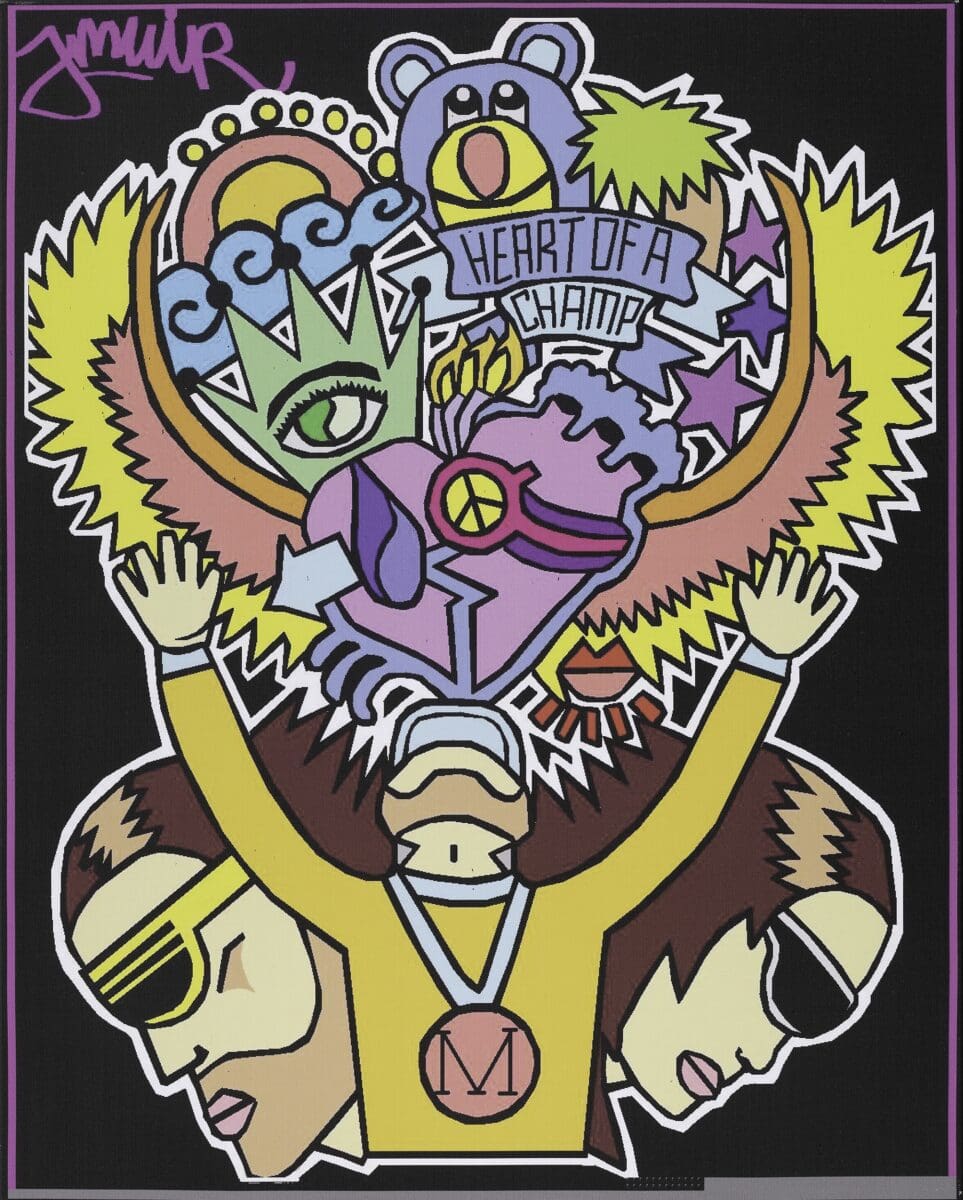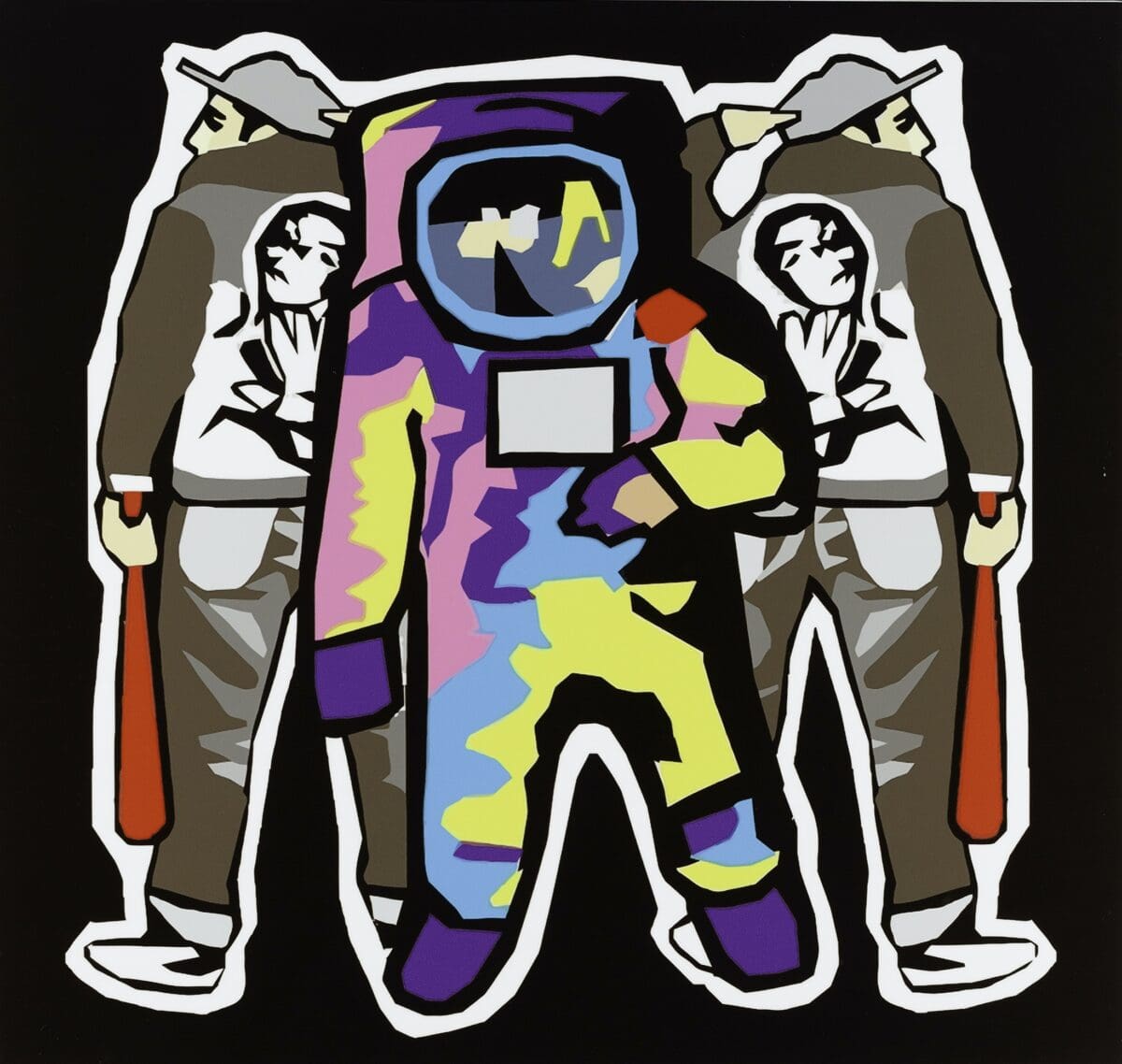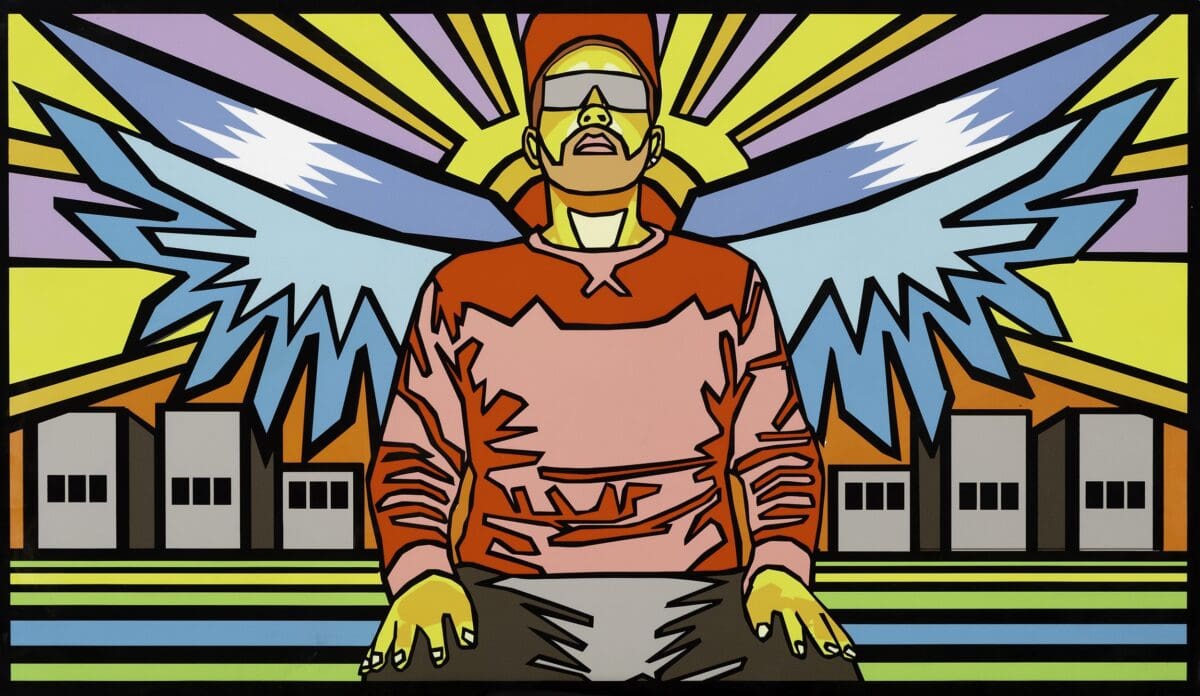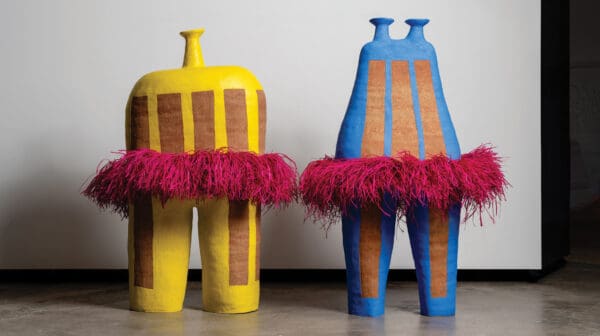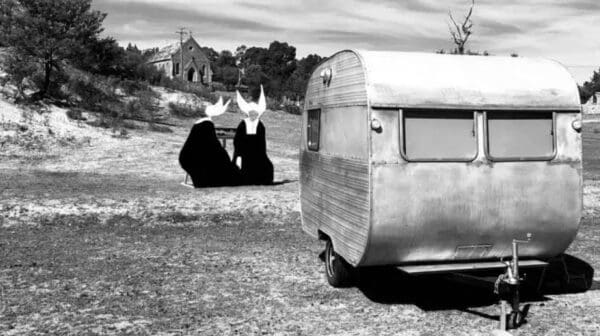In 2015, the Gunditjmara, Yorta Yorta and Barkindji artist Josh Muir created a self-portrait titled Forever I Live. He depicted himself with a Basquiat-style crown scribbled above his head and flowers, diamonds and patterns surrounding him.
Now, two years after Muir’s untimely passing at the age of 30, that self-portrait gives a major retrospective exhibition its name. Koorie Heritage Trust’s JXSH MVIR: Forever I Live celebrates Muir’s work and legacy, co-curated by his mother, Justine Berg, and partner, Shanaya Sheridan.
Muir was born and raised on Wadawurrung Country in Ballarat. His relationship with the Koorie Heritage Trust began in 2013, when he was included in an exhibition called The Ballarat Four. The following year, he won the Creative Victoria Excellence Award at the Koorie Art Show and went on to exhibit many more times there.
“Recurring themes in Muir’s work included mental health and cultural identity through the lens of postcolonialism. Making art was a form of therapy, from his beginnings as a hobbyist to his professional career.”
KHT CEO Tom Mosby recalls meeting Muir as a young artist and being struck by his unique style, which developed over the years from paint on canvas to video and digital works, including a large-scale projection for White Night in 2016. “Josh was very fresh with his approach coming out of his youth and the street aesthetic that he was very much into,” he says.
JXSH MVIR: Forever I Live comprises over 90 works, from Muir’s earliest pieces to work made just before his passing. “He’d speak about how much work he had created over the 12 years of his career – tracking it all down and seeing everything together in the catalogue, I can see what he was talking about now,” Sheridan says. “There are so many physical works in the exhibition, but it’s not everything – there’s so much more out there.”
Recurring themes in Muir’s work included mental health and cultural identity through the lens of postcolonialism. Making art was a form of therapy, from his beginnings as a hobbyist to his professional career. “He used to sit in his room with his Posca paint pens and his brushes and get his thoughts and feelings out on the canvas,” Sheridan says. “Art has been part of Aboriginal culture for thousands of generations and it is a therapeutic means for all of us, and that’s where it started out for Josh.”
Co-curating the exhibition with Muir’s loved ones ensured a personal touch – Berg and Sheridan share their stories and memories of the artist through catalogue essays and extended labels. “It really gives the exhibition that personal voice that if we were doing it by ourselves, we couldn’t ever have given,” Mosby says. “Bringing in Shanaya and Justine as co-curators, it’s not just an exhibition for us – it’s an exhibition with heart, with a soul.”

That family connection is crucial as it’s not only Muir’s artistic legacy that is being honoured but also his children, five-year-old Jamari and three-year-old Jyla. “Jyla is just the absolute spitting image of him, and Jamari has picked up all of Josh’s mannerisms, even down to the way he stands – his little unique personality, his humour, even his taste in music,” Sheridan says. “Jamari started school this year, and I said to him, ‘What do you want to be when you grow up?’ and he said, ‘an artist like my daddy’.
“This exhibition is for them – I hope one day they’ll look back at the photos and realise how much influence their dad had on the Aboriginal and Torres Strait Islander community.”
Mosby and his team are supporting the family by guiding them through licensing and copyright conversations to ensure that Muir’s work is protected and preserved. “The significance to me is that long-term legacy – making sure that he continues to be known and that he is recognised as a very important part of Victorian Aboriginal art history,” Mosby says. “It’s for his kids and protecting his estate and his memory. That’s what I’m really wanting to see coming out of this – that he’s not forgotten.”
Sheridan shares Muir’s favourite saying: aim for the stars, not the streetlights. “That’s something that he really strived for, not just with art but life in general,” she says. “I hope it gives encouragement to those who might be struggling with their mental health, those who are just emerging within their arts careers and all the young people out there.”
JXSH MVIR: Forever I Live is a Koorie Heritage Trust exhibition now on tour at the Art Gallery of Ballarat:
JXSH MVIR: Forever I Live
Art Gallery of Ballarat
On now—2 February 2025



